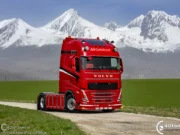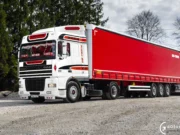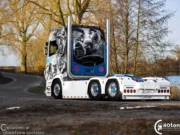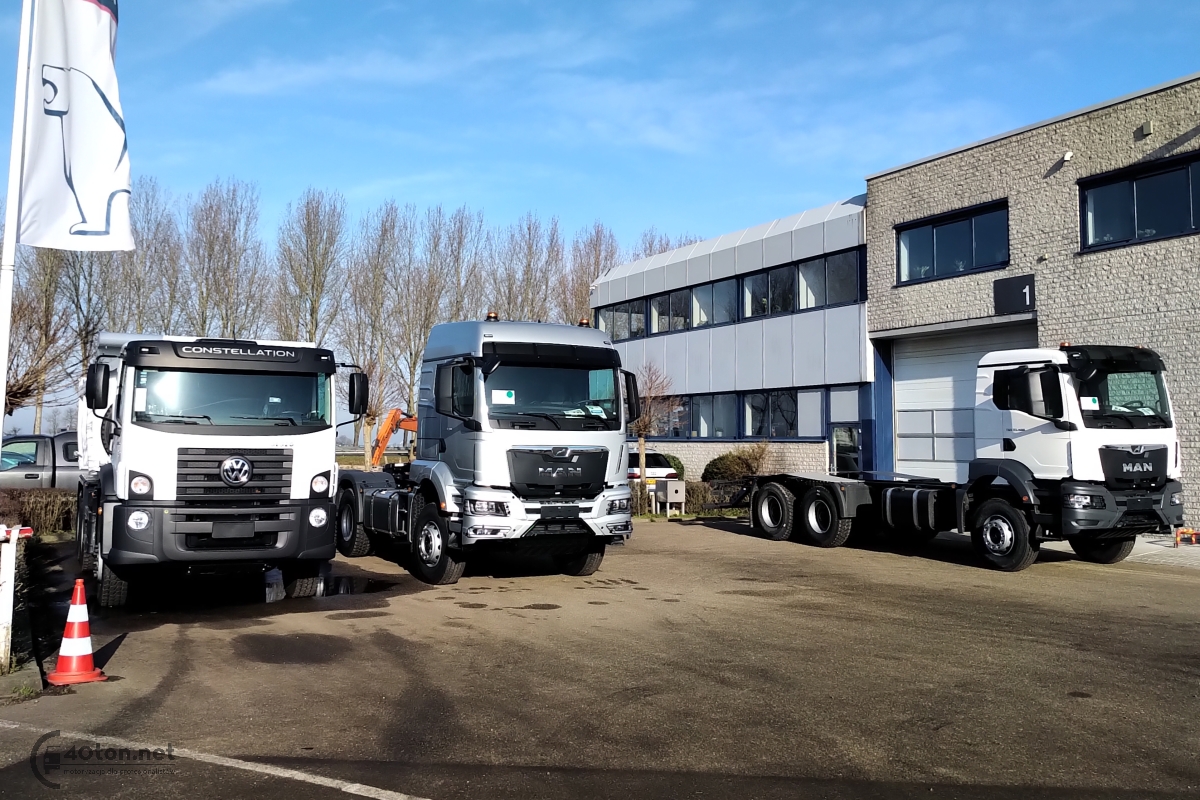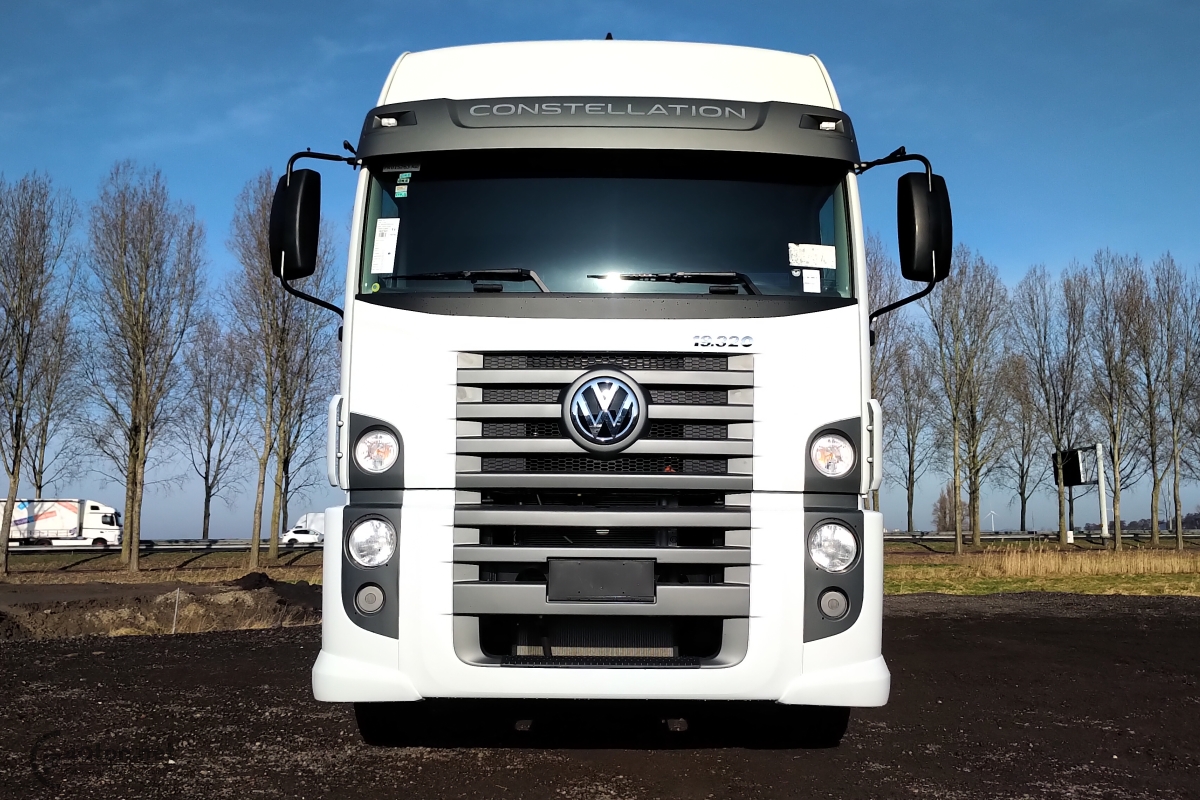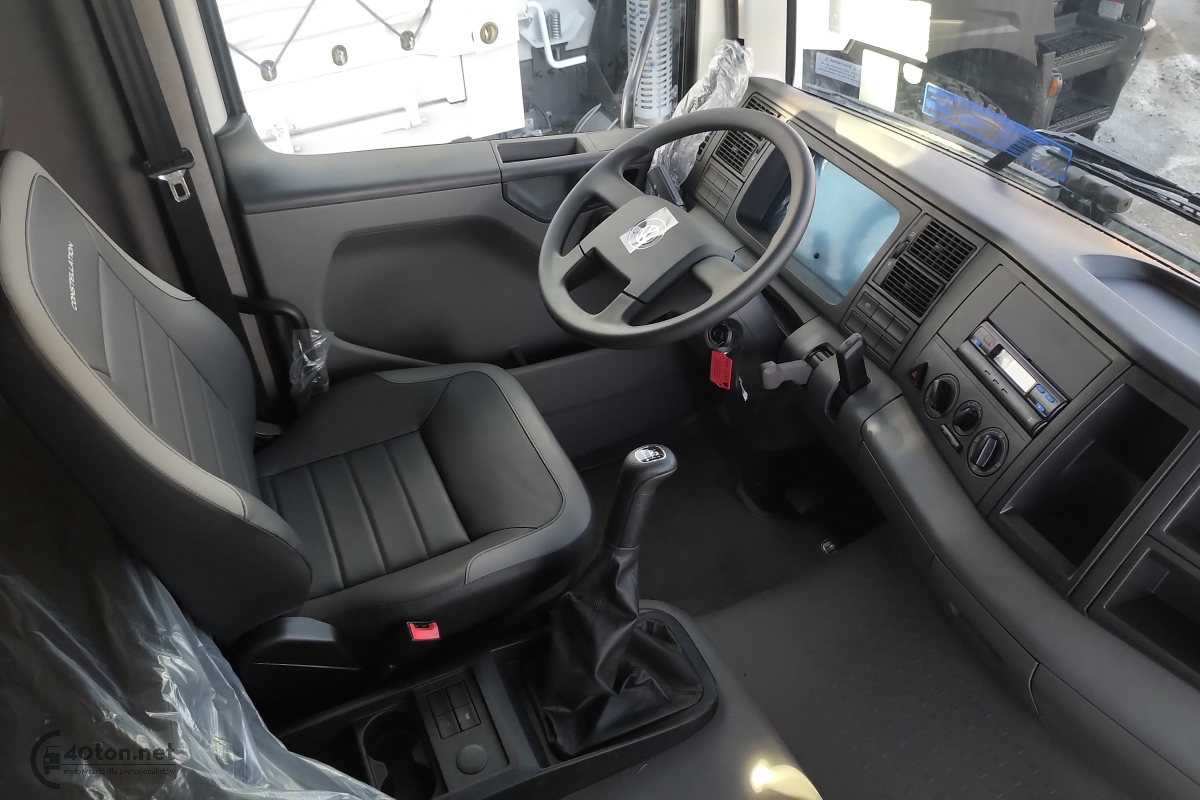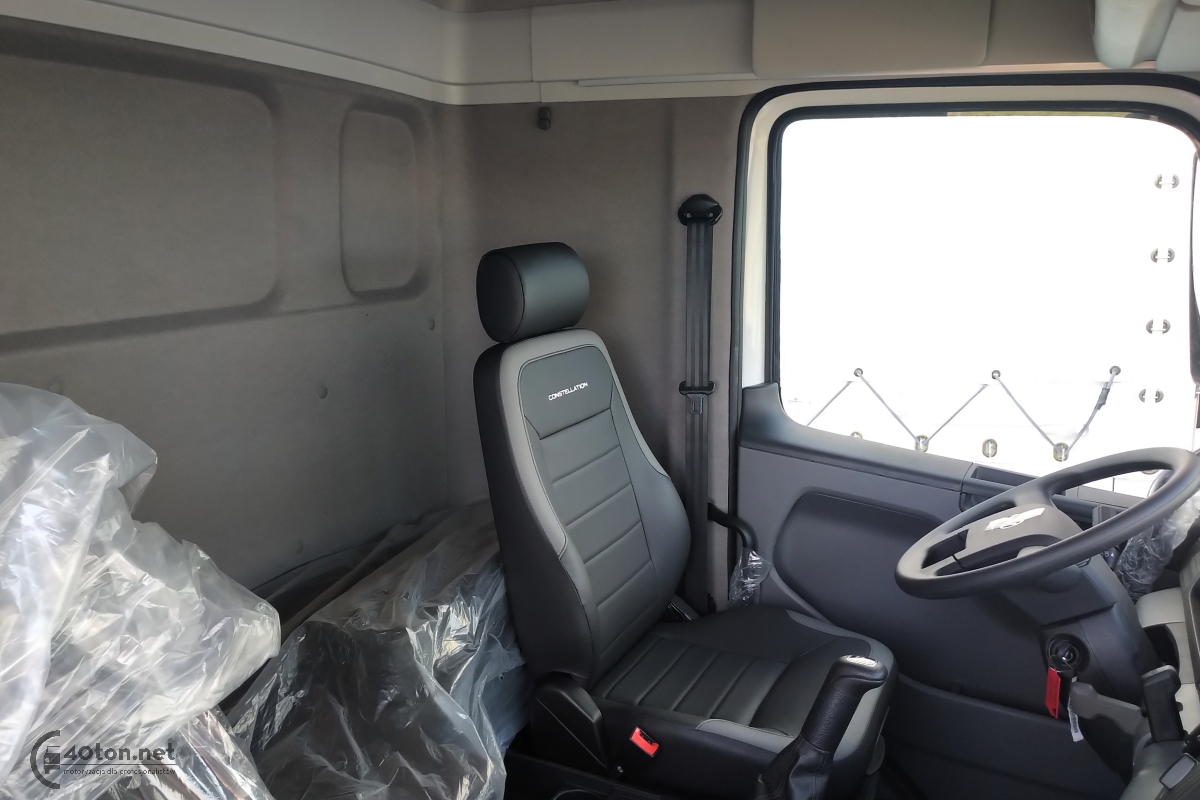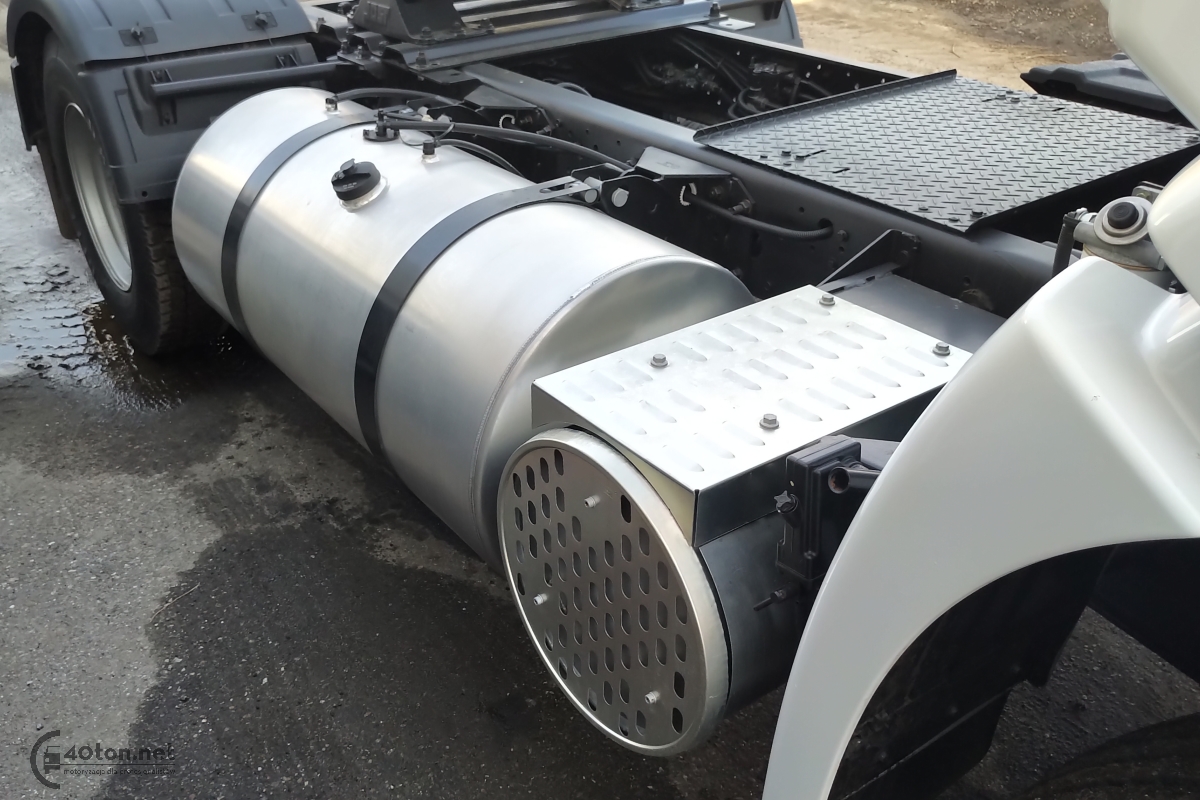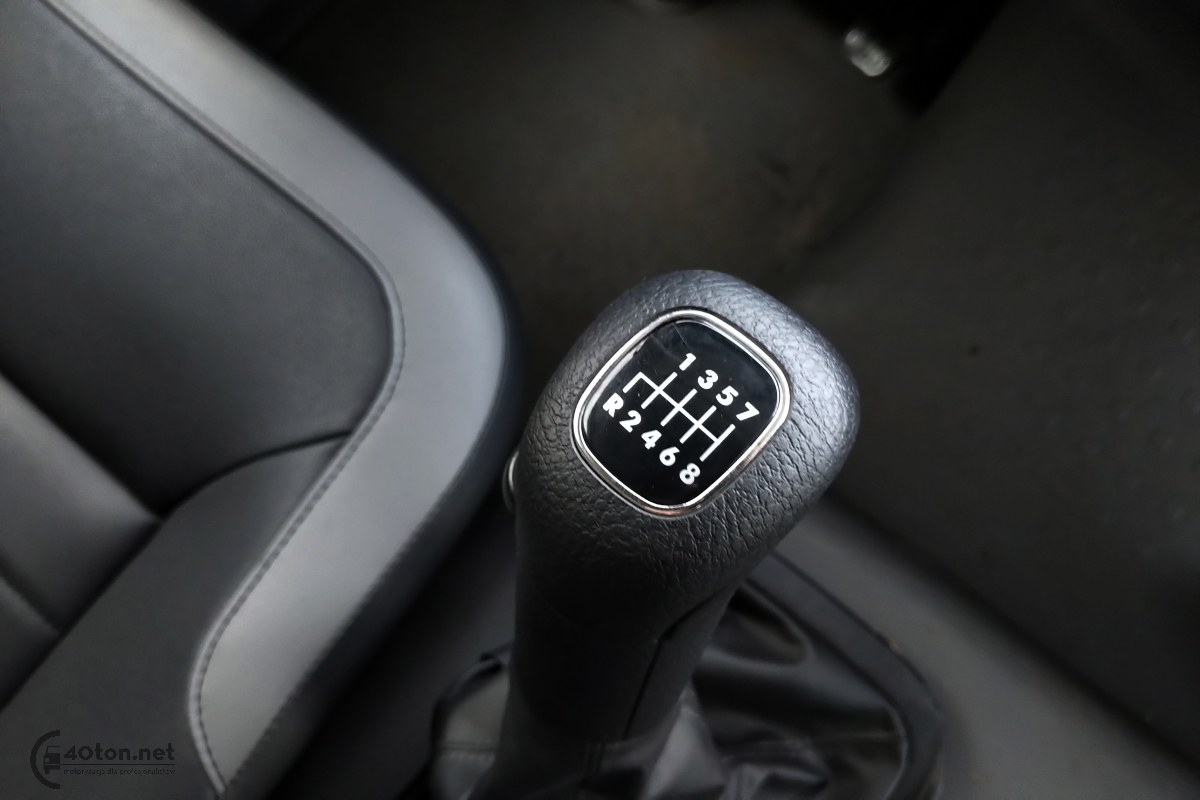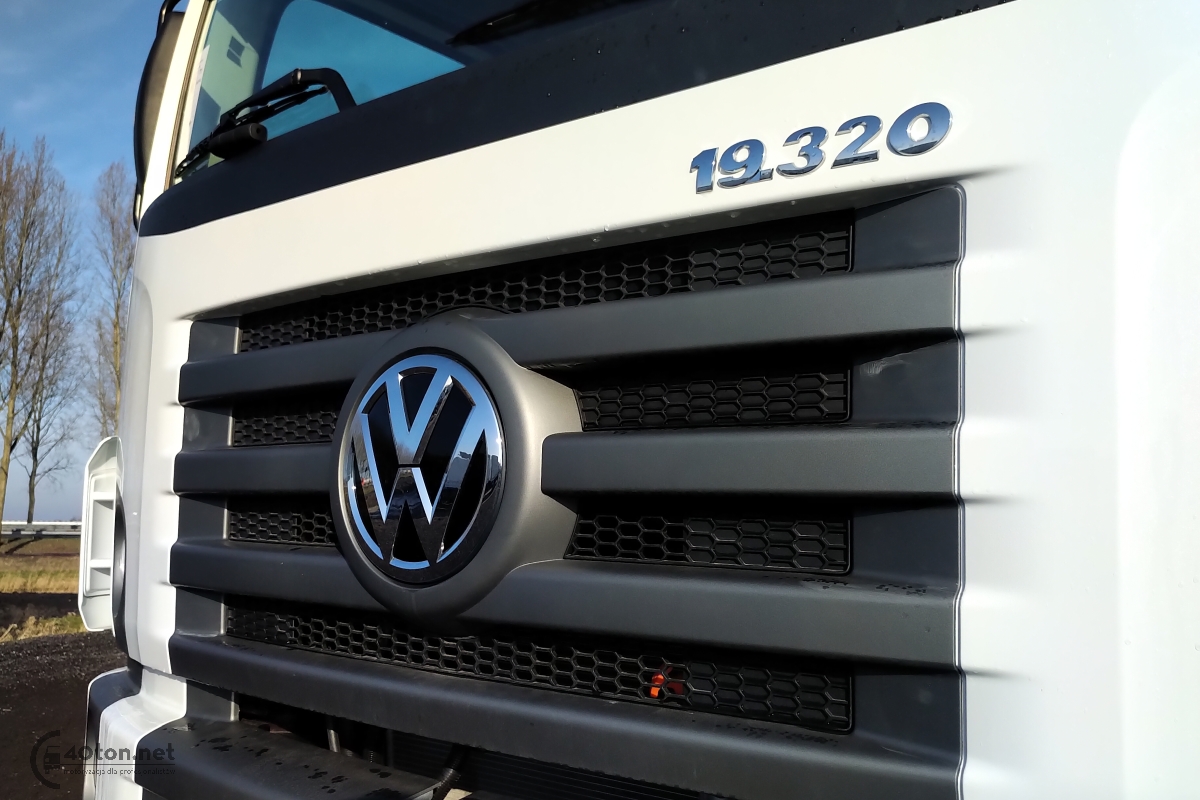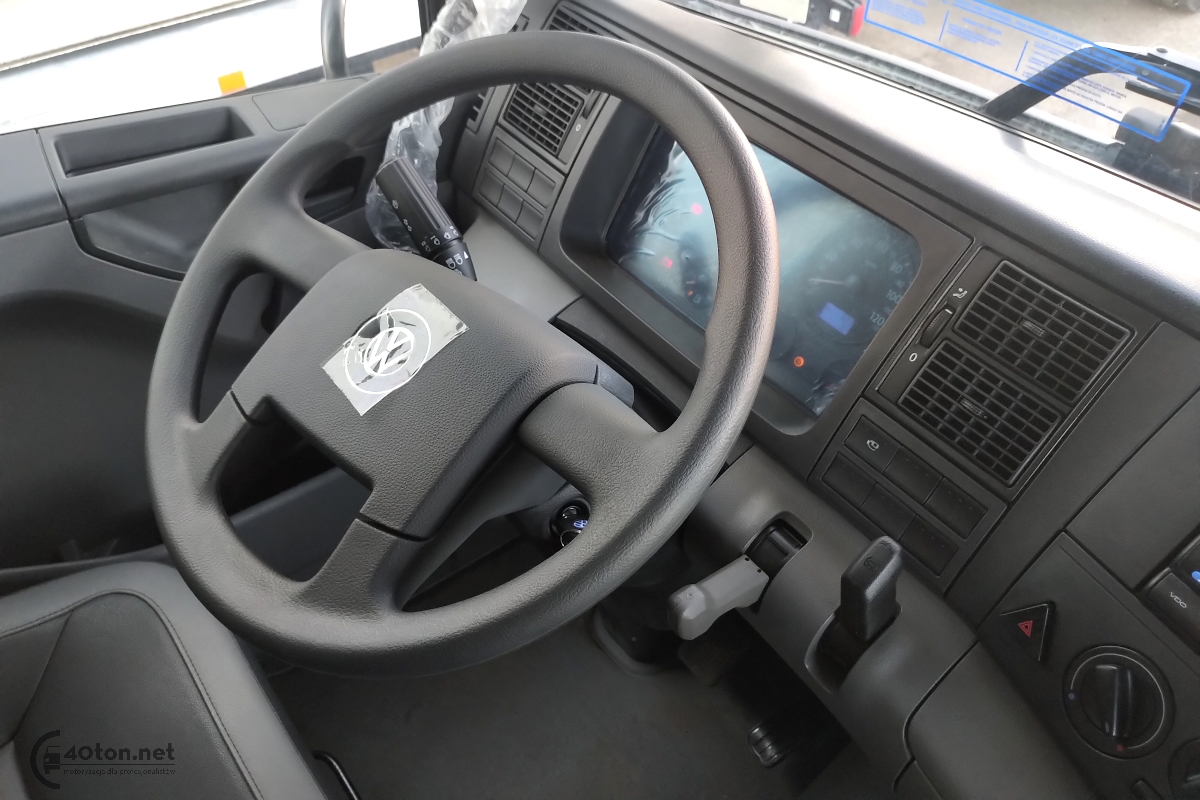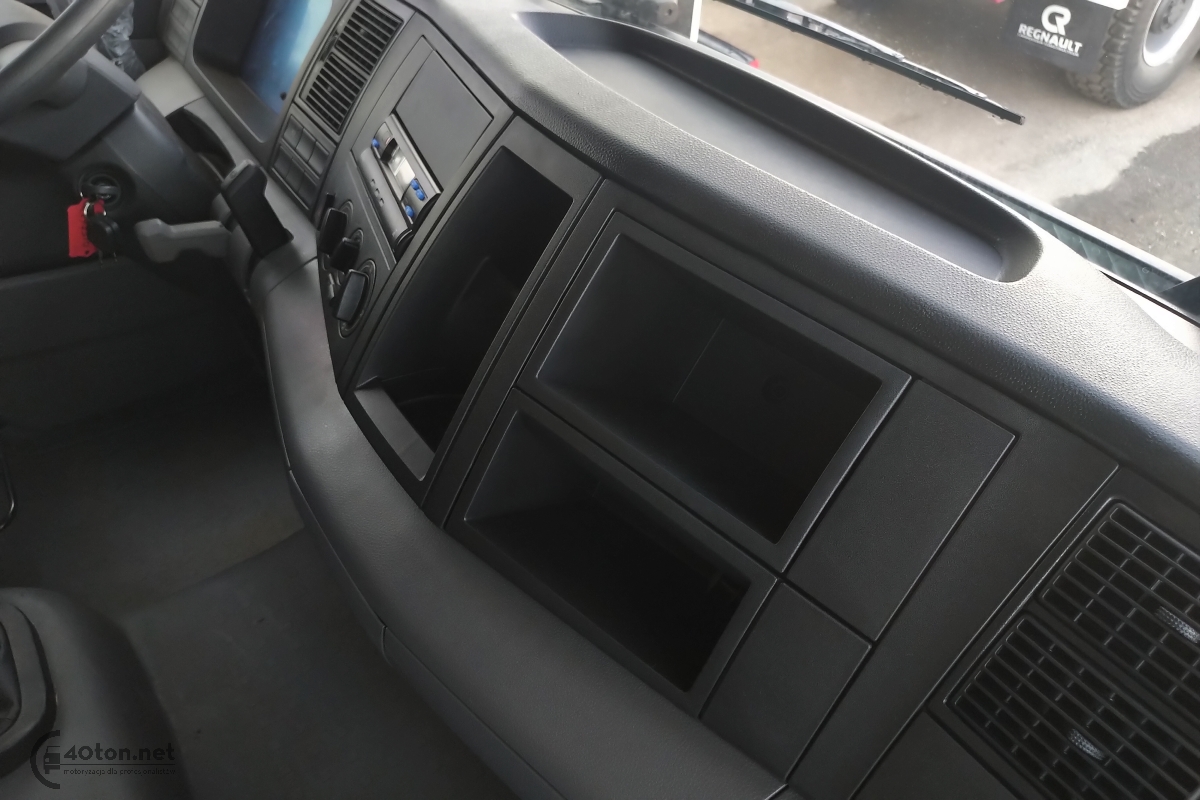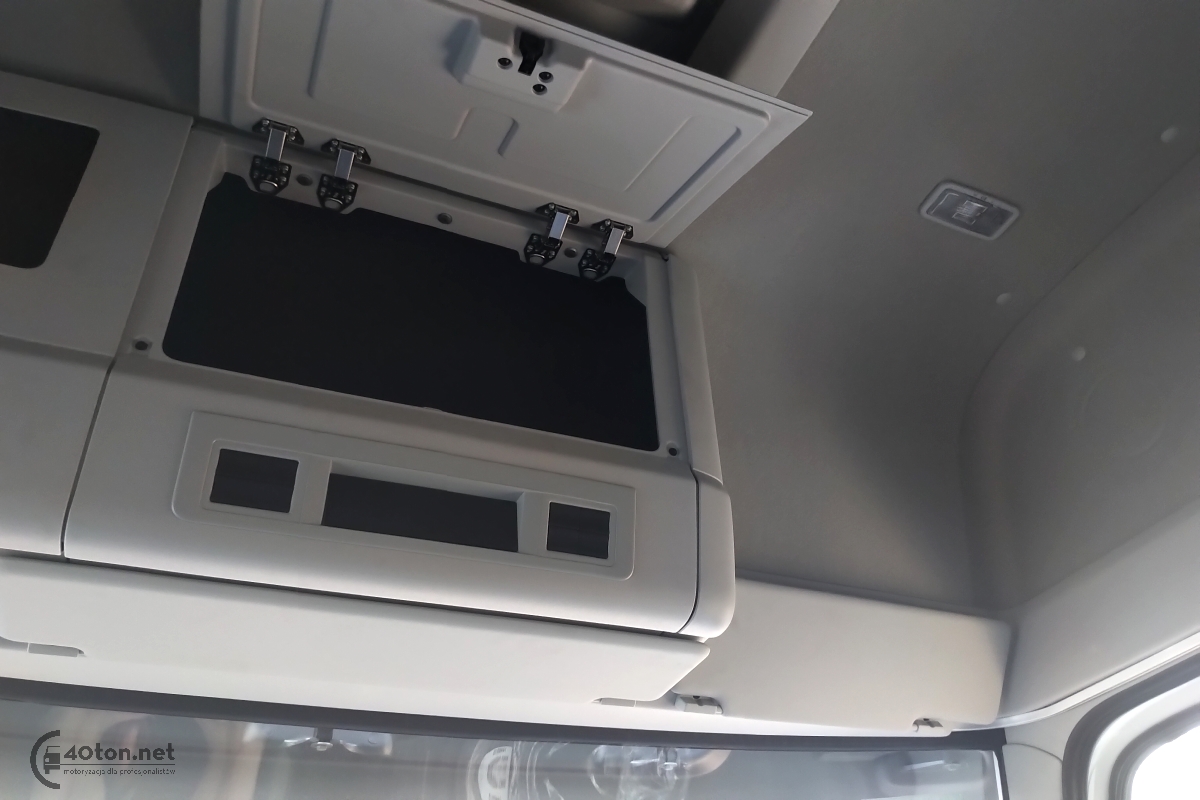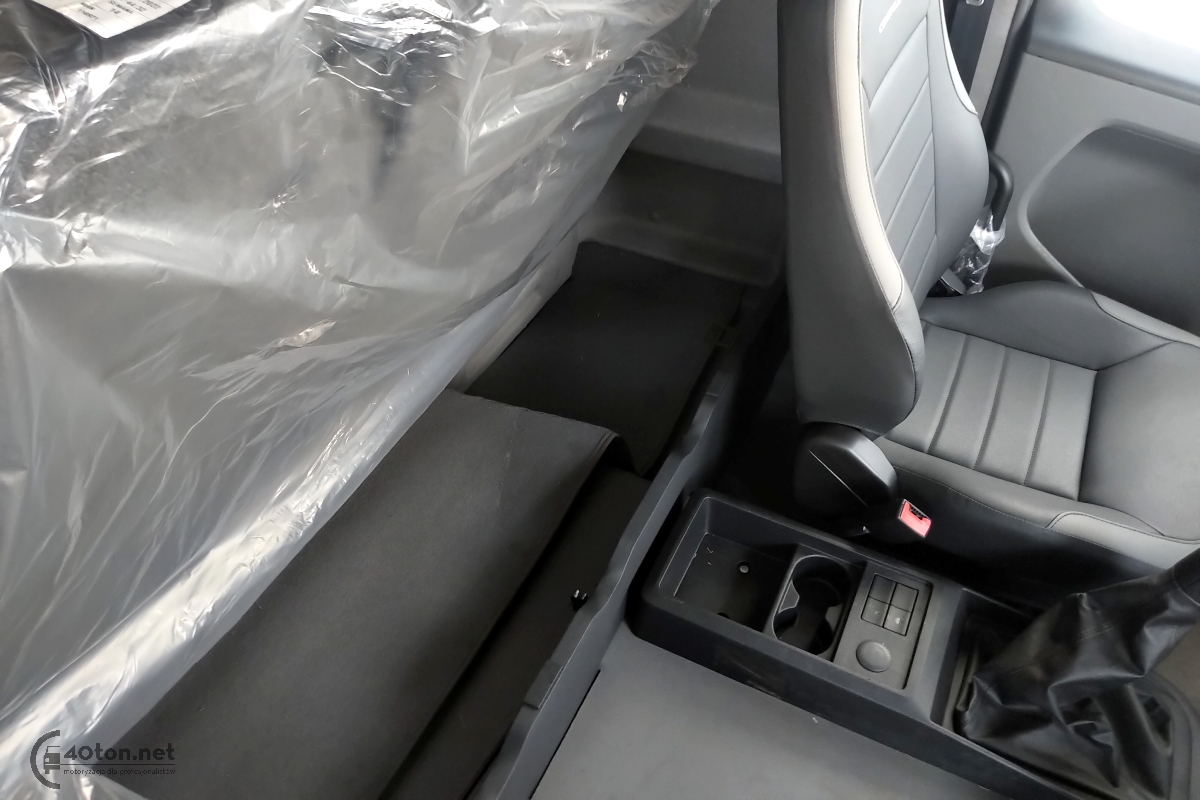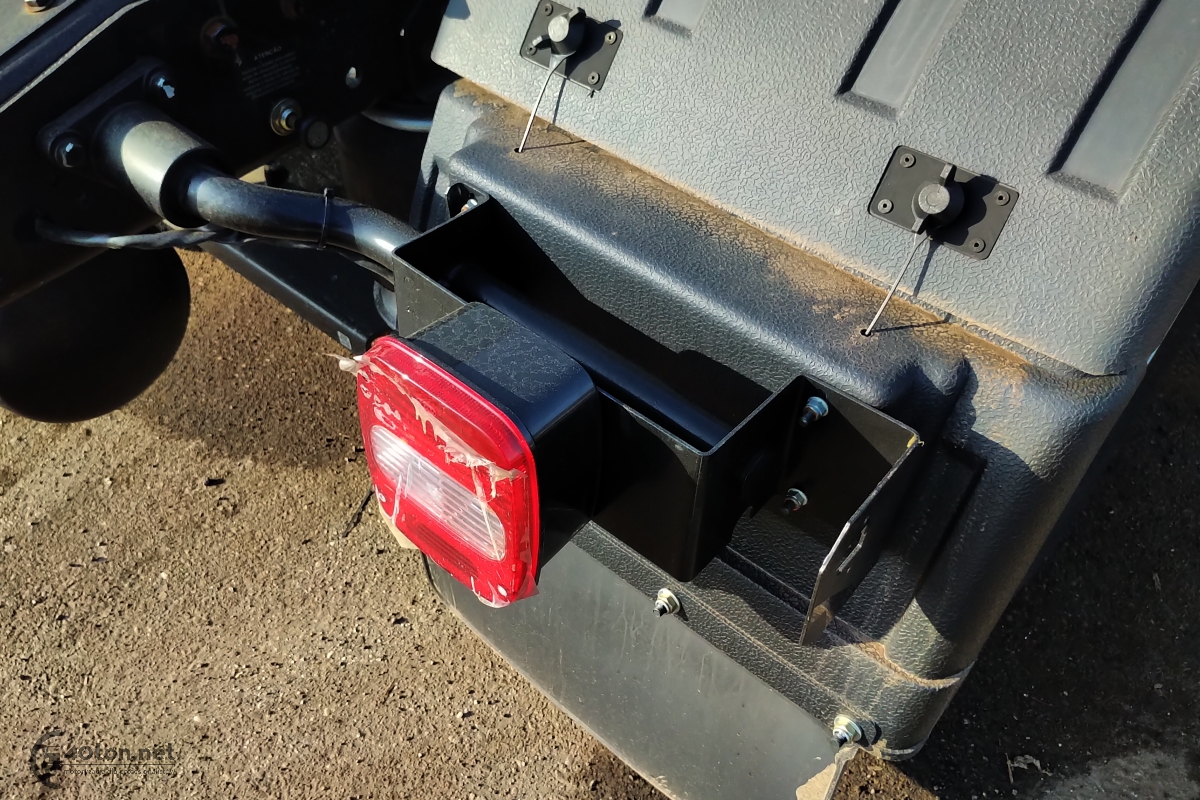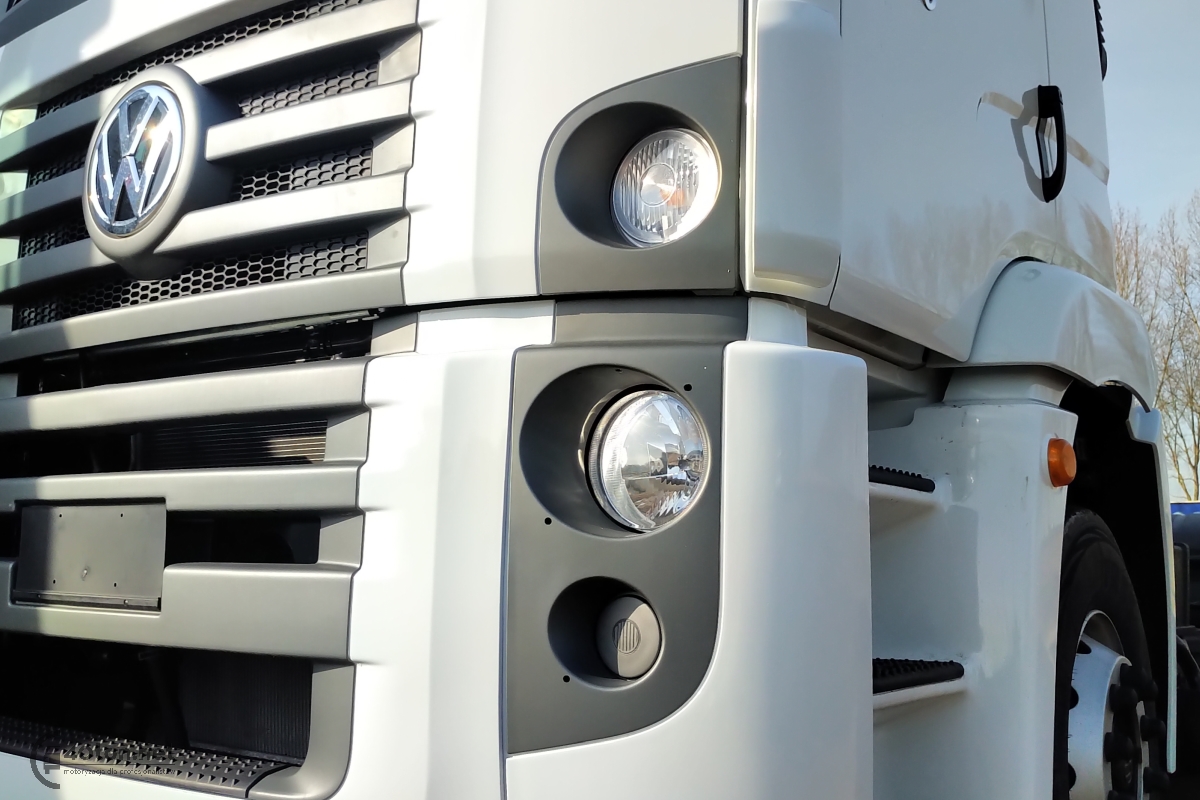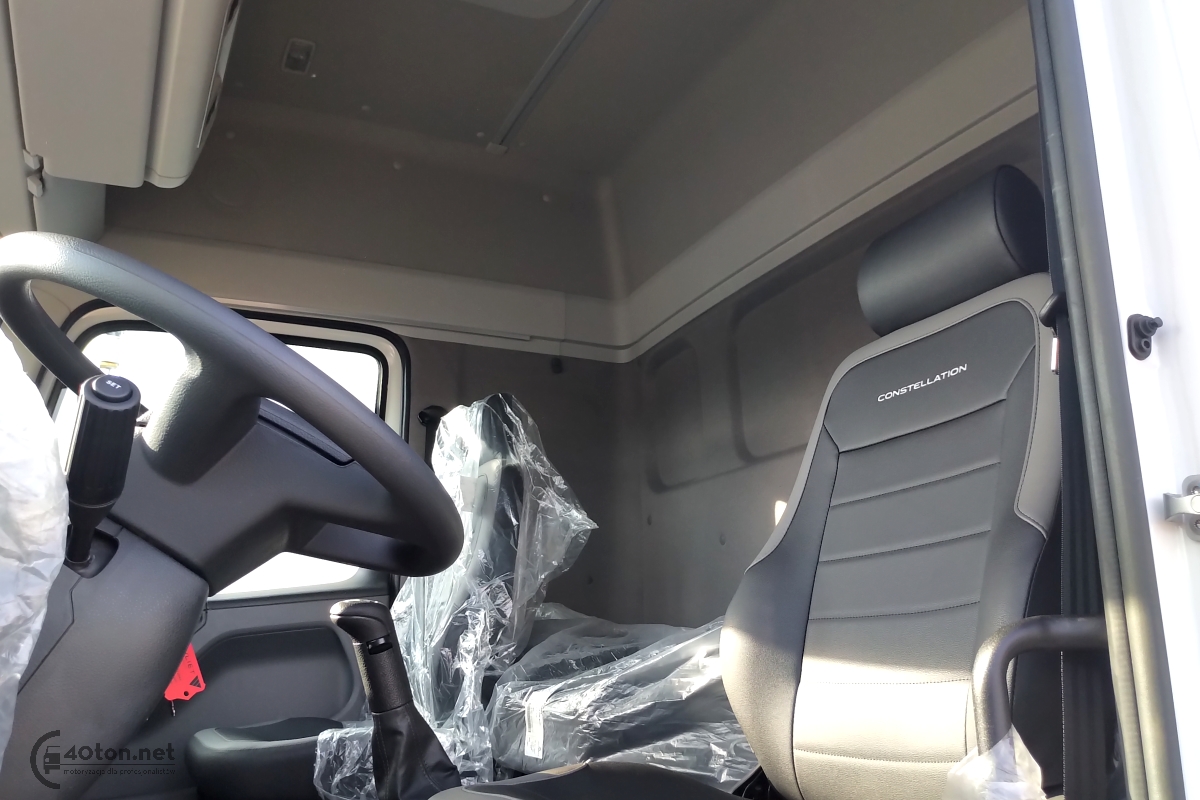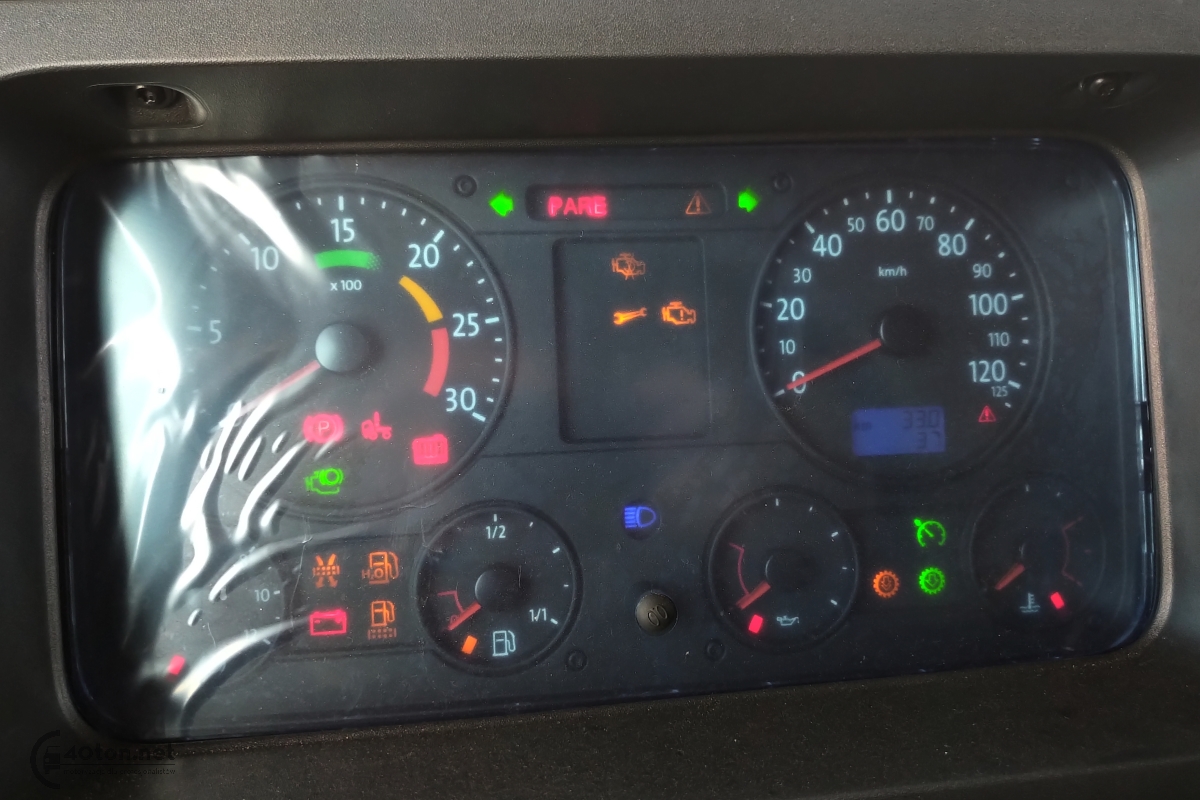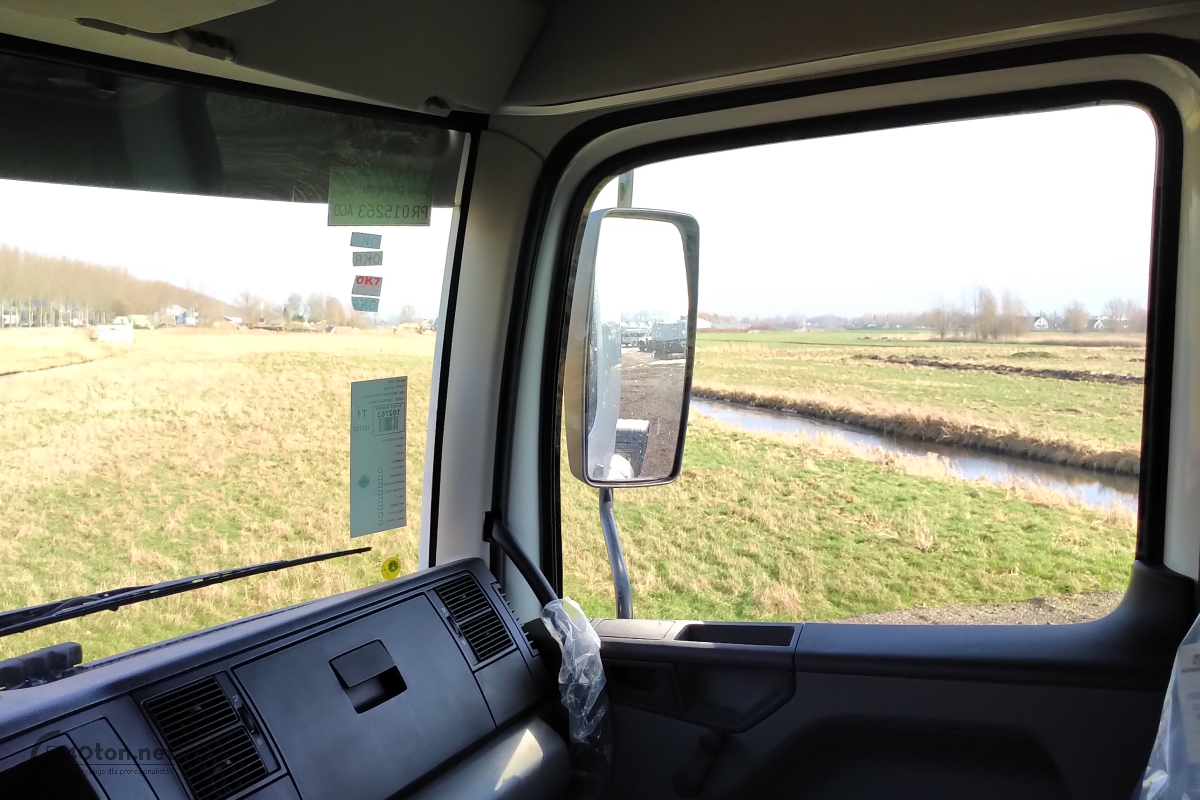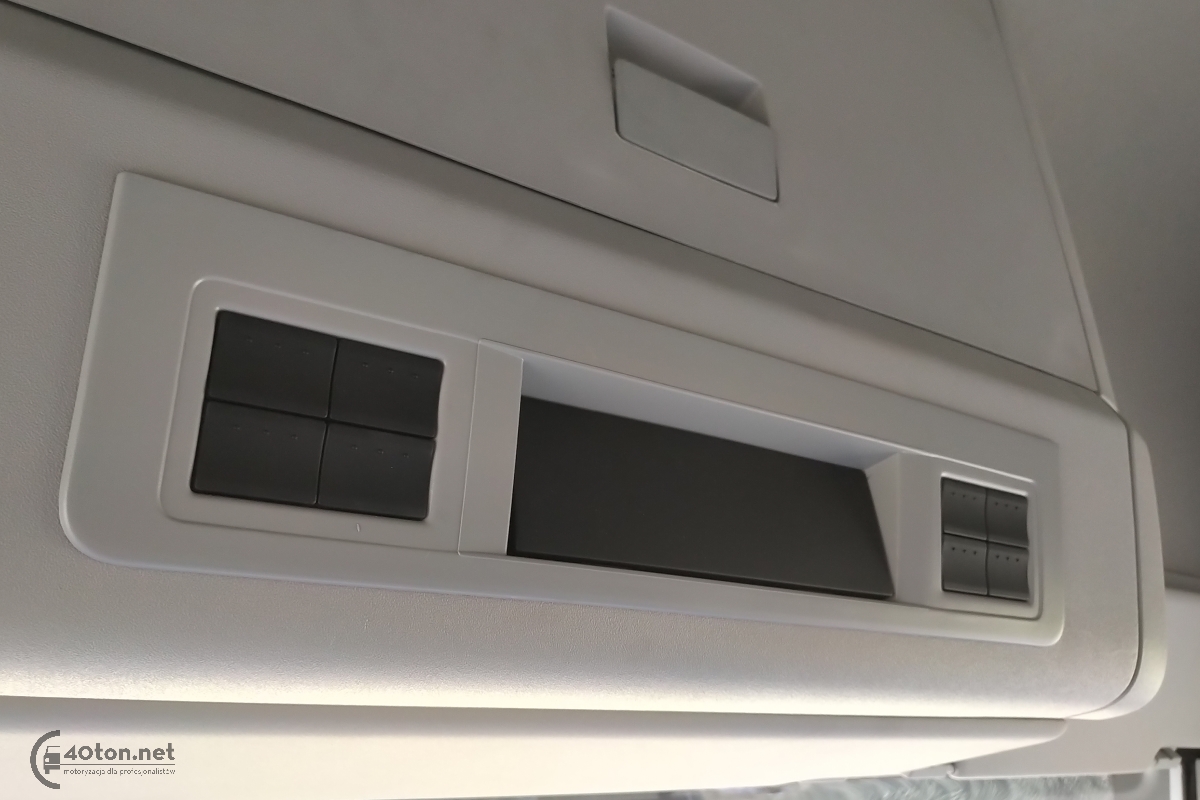Translated by Tomasz Oryński
Polska wersja dostępna pod tym linkiem.
Brazilian Volkswagen trucks were mentioned several times already in my articles. In recent years we could learn, for example, that this is the most profitable brand from all trucks of this consortium (results here), and that it’s market share in Brazil can be as high as 30% (stats here). We also know that Brazilians love to modify those vehicles in really crazy ways (examples here), and that recently even Euro 6 engines can be found under their cabs (info here). Today we are getting a chance to look at such Volkswagen closer than ever before. A couple of days back I had an opportunity to see such vehicle in person, to sit behind the wheel and even to make a short test drive. And, what’s most interesting, it was all possible without leaving Europe!
How come Volkswagen Constellation found itself on the European soil?
Volkswagen Constellation 19.320, that you see on the pictures attached, is available for purchase from Van Vliet Automotive Group/PK Trucks, based in Nieuwerkerk aan den IJssel on the outskirts of Rotterdam. This company specialises in sales of brand new vehicles to non-European markets, notably to western Africa. Customers are offered vehicles that are ready for the road, in stock, and often even with the bodies already build on them, so the delivery to the destination country – via ship sailing from Antwerp – can be performed in as little as two weeks. It is worth stressing that we are talking about vehicles ordered for the African market, specified for the local requirements. So in practice we are talking mostly about trucks with engines meeting Euro 3, or even Euro 2 emission standards, usually on spring suspension and and extremely simplified specification when it comes to electric and electronic equipment.
Up top date, Van Vliet/PK Trucks specialised in exports of trucks of two European manufacturers: Iveco and MAN. A year ago they however decided to introduce third brand to their offer, notably Volkswagen Caminhões e Ônibus, that means a Brazilian truck branch of Volkswagen. It was a direct response to the flood of Chinese trucks, that can be seen on the African roads more and more often. This Chinese equipment is astonishingly cheap, even compared to the simplest versions of the European vehicles, however many of the hauliers complain about their poor durability. Brazilian Volkswagens are to become a mid-market offer, coming closer on the price to the Chinese competition, while offering much better hardiness, closer to what European brands are known for. Volkswagen Constellation is approximately 40-50% cheaper than MAN while remaining the product of the same concern, using the same time-tested components and even has a MAN badge on its nameplate.
What is the characteristics of Volkswagen Constellation?
So much for the introduction, now let’s talk some real meat and look closer on the specifics of Brazilian Volkswagen. The key words here have to be “simplicity” and “minimalism”, which can be seen even in the design of the body. Since its premiere in 2005, so 18 years ago, the cab looks exactly the same. There weren’t any significant facelifts. It is also a very simple cab, without any unnecessary additions. It can be also noticed that the whole body is smaller, being significantly shorter than for example European Renault Premium. However, Volkswagen did everything to be able to sell this cab as a long distance product. The engine tunnel is relatively low, there is no upper cupboard on the right side, the bed is placed almost at the floor and both seats can be moved quite deeply into the sleeping compartment. Thanks to all those solutions with my 190cm of height I was able to take a comfortable position behind the wheel or stand up in front of passenger seat.
When one looks at the truck’s interior, the connections with smaller Volkswagens from the turn of millennium can come to mind. The layout of the clocks, switches and vents, the blue illumination or general feel of the plastics – it all looks as it was transplanted from Mk 4 Golf or from late examples of T4. But what’s most important, the interior not only has similar look to those cars, but it also seems to be equally hardy, to do not use the word “indestructible”. Just look how the cover of the biggest top cupboard had been designed: it has been mounted on four metal hinges and it gives the feeling of the sturdiest cover I ever closed in a lorry. Apart from that the whole design turns out to be exceptionally simple again. We won’t find here not only designer trim, but also no drawers, table, divisions under the bed or upholstery – apart from the seats of course.
As we are talking about the trim, we have to stress up that this particular example was stripped of many additions on purpose. In Brazil Constellation might be equipped, just like the trucks from the “Big Seven”, with things like touchscreen, electric windows, adaptive cruise control, multi-function wheel with an adjustable steering column or LED day running lights. But the budget version for western Africa is equipped with only what is really necessary, hence wind-up windows, single pane mirrors, non-adjustable steering column, lack of armrests in the seats and seatbelts attached to the cabin wall. I was unable to find the trip computer or the radio either, and instead of switches I found over 20 square dummy plugs. The exceptions – the only three switches that actually did something – were responsible for switching the single-stage engine brake, interior lighting and air-condition. Because yes, the air condition was there – after all in Africa this is worth its weight in gold, just as the sun visor is.
In our browse through the truck equipment we arriving at the legal matters. Here the most interesting thing is an analogue tachograph with a drawer, that was installed because it is a mandatory device in Brazil. However it might turn out to be not necessary, as in western Africa tachos are virtually used only for ADR transports. Next to it we can find element that has been banned in Europe but both in Brazil and western Africa it is still legal to use it: a manual handle to operate trailer brake, placed next to the standard handbrake and allowing to straighten the rig in case of jackknifing. And this is topped with the most obvious thing, which is non-complicity with European emission standard. Constellations for Brazilian markets had been fitted with Euro 5 engines for many years, and from this year onward it can be also built with Euro 6 one. Meanwhile the one for Africa had been fitted with the simplest possible Euro 3 fittings, without Ad-Blue system. This is simply a necessity on the markets it is destined for.
As we can see from its denotation 19.320, the power is provided by a 320 HP engine. In this case it’s a Cummins 8.3 motor offering 1288 Nm maximum torque. In the country of origin this engine is very popular and installed in medium-weight trucks and city buses. Brazilian Volkswagen however introduced this engine to tractor units, because at this market relatively small and weak engines are very common. The gear ratios are making up for the low power and this is the case here as well, as behind the small Cummins a 16 gear ZF gearbox can be found, working together with a Meritor drive axle of 3.73 ratio. This is sufficient for Constellation 19.320 to be rated to work as a 35 tonne combination set, although of course this is not a design suitable for low consumption of fuel at high speeds. For those more interested I can add that in Brazil Constellation is now available also with bigger, 12.4 litre, 460 HP engine designed by MAN. But this drivetrain is built into 6×2 or 6×4 tractors designed to work even with 57 tonne combinations. Also, in Brazil automatized gearboxes have became a standard, so this manual double-H shifter has been installed especially for the African market.
So what is the Brazilian tractor in African configuration to drive? Unfortunately I was not able to check in on the public road, as it would be in no way possible to register such a vehicle in Europe. However I was able to drive it a bit around the huge compound of Van Vliet/PK Trucks, between rows of trucks awaiting export. Here, the Volkswagen turned out to be a lorry with a surprisingly precise controls that does not require too much strength from the driver. The steering was giving a very good feel of the road, the gear lever had pleasantly short movement and the reaction to the gas pedal was virtually instant, bringing to mind trucks from the bygone era. The cab also turned out to be unexpectedly well silenced and the vibrations of the engine were dampened properly. For such a budget vehicle, the Volkswagen truly exceeded my expectations and left me with an impression of a simple, but well put together machine. So if we add to this really durable design of the interior and the drivetrain comprised of time-tested components, we can really arrive at the conclusion that this is a Volkswagen T4 amongst trucks.



